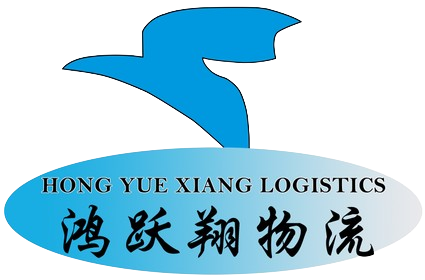News
Navigating Cross-Border Logistics for E-commerce Growth
The Strategic Role of Cross-Border Logistics in E-commerce Expansion
Why Cross-Border Logistics Drives Global Market Access
Cross border logistics is really important when it comes to getting into international markets, which lets businesses grow their customer base and bring in more money. According to some research out there, companies doing cross border e commerce tend to see revenue increases over 25%, way ahead of what local only businesses can manage. That kind of jump shows why good logistics matters so much for breaking into global markets. What's making this even easier now are these big online marketplaces that have opened up doors for everyone from small startups to established brands. They give businesses all the tools they need without having to build everything from scratch. Suddenly, entering foreign markets isn't just possible but actually quite straightforward, creating totally new opportunities for spreading out income sources and growing the business beyond home turf.
Key Components of a Scalable Logistics Network
Building a logistics network that can scale is pretty much a must if companies want to keep up with the explosive growth of e-commerce these days. At its core, this kind of system needs good warehouse setups, solid transportation routes, and effective ways to get products out there on time while keeping costs down for customers all around the world. Working with third party logistics folks (or 3PLs as they're called in the biz) gives companies extra breathing room when business picks up. These partners handle a lot of the heavy lifting without requiring massive capital investments upfront for new facilities. Tech plays a huge role too. Good software isn't just nice to have anymore it's basically table stakes in today's market. Modern platforms help manage everything from international shipments to real time tracking and stock levels, making daily operations run smoother than before. All put together, this mix creates a logistics framework that grows right along with what the e-commerce sector throws at it, giving businesses the flexibility they need to pivot quickly when markets shift direction unexpectedly.
Leveraging Technology for Efficient Cross-Border Operations
AI and Automation in Warehouse Management
The introduction of AI powered tools into warehouse management has completely changed how things work on the ground floor, mainly because it cuts down on time wasted and saves money on staffing. Modern warehouses now run smoother as they handle stuff like organizing stock and packing orders much quicker than before. Take robotic arms for picking items off shelves, for instance these machines can grab products and pack them out at speeds humans just cant match. Companies implementing such tech often see their output jump around 30% give or take depending on setup. Beyond just saving pennies, this kind of tech gives businesses an advantage when trying to keep up with online shoppers who expect fast shipping times and zero mistakes in their packages.
Real-Time Tracking Systems for Supply Chain Transparency
Real time tracking systems have become essential for making supply chains more transparent and helping companies deal with unexpected delays or problems faster. When businesses can actually see where shipments are at any given moment, customers tend to stay happier and stick around longer because deliveries arrive when promised. Logistics companies report something pretty impressive too – putting tracking systems into place typically cuts down delivery times by about 20%. That kind of improvement really shows how much these tech solutions matter for day to day operations. Beyond just keeping customers satisfied, this visibility helps managers run their supply chains smoother without constantly chasing down information through multiple channels.
IoT Integration for Smarter Inventory Control
IoT technology is changing how companies handle their inventory thanks to features like automatic stock tracking and instant notifications when supplies run low. When businesses adopt these IoT systems, they often see lower storage expenses because stock quantities stay aligned with what customers actually need. Research shows that companies using IoT for managing inventory report around 40% fewer instances where products go out of stock. Better control over inventory helps streamline the entire supply chain while creating some protection against sudden changes in customer demand. As a result, businesses end up with inventory systems that work better and respond faster to market conditions without needing constant manual oversight.
Overcoming Customs and Tariff Challenges
Streamlining Customs Clearance with Digital Tools
The world of cross border online shopping keeps changing fast, and digital tools are now pretty much a must have for getting products through customs without headaches. These systems take care of all the paper work stuff so companies don't get stuck waiting around for weeks. Most businesses find they can cut down on wait times when using digital submission platforms, which makes sure everything meets those complicated international rules properly. Looking at numbers from various e commerce reports, it seems companies that jump on board with these tech solutions often see their customs processing time drop by about half. That kind of speed difference really matters when competing in this crowded global marketplace where customers expect quick results.
Strategies to Mitigate Tariff-Related Costs
Businesses looking to cut down on those pesky tariff costs need to get smart about how they approach international trade. Two main approaches stand out strategic sourcing decisions and knowing which trade deals apply between different countries. Getting this right makes all the difference when it comes to avoiding unexpected tariffs. Setting up good systems for classifying products according to tariffs helps companies stay compliant and avoid costly mistakes at customs checkpoints. Industry experts point out something interesting many firms that watch for upcoming tariff shifts and adjust quickly end up saving around 15% on these expenses. Makes sense really, staying ahead of the game instead of reacting after the fact saves money and headaches in the long run across global operations.
Case Studies: Global Success Stories in Cross-Border Logistics
CIRRO E-Commerce: Optimizing EU Deliveries via Regional Hubs
CIRRO E-Commerce overhauled its European logistics operations by setting up several regional distribution centers across France, Germany and Italy. These hubs cut down delivery times significantly for major markets in Western Europe. Looking at shipping records and transportation patterns helped them figure out better routes, which saved around 25% on overall shipping expenses. Their new hub model shows real promise when it comes to scaling operations while keeping costs low in international shipping. Other businesses interested in improving how they handle deliveries abroad might want to take a closer look at what CIRRO has accomplished with this network expansion.
Cainiaoâs Smart Warehousing Solutions in Australia
To tackle its operational efficiency issues, Cainiao rolled out smart warehousing tech across several facilities in Australia, incorporating artificial intelligence and automated systems throughout the process. The new approach gave them much better control over inventory management, cutting down on those costly situations where too many products sit around unused. With real time data analysis tools at their disposal, Cainiao managed to boost order processing speeds by about 30 percent overall. This kind of performance speaks volumes about how well these kinds of tech investments work when applied to international shipping scenarios. What Cainiao accomplished shows just how transformative modern technology can be for logistics companies trying to stay competitive in today's fast paced market environment.
FedExâs Partnerships for Last-Mile Efficiency
FedEx is teaming up with local delivery companies across the country to boost those final mile deliveries, especially where roads get tricky in rural spots. When they mix what locals know about the area with their worldwide shipping know-how, customers actually see better service even when packages need to travel through tough terrain. The numbers tell an interesting story too - delivery times for some places dropped by almost half after these collaborations started working out. What we're seeing here makes sense for anyone running a delivery business. Combining big picture planning with ground level knowledge helps solve real world problems in getting goods from point A to B faster. Other companies looking to cut costs while keeping clients happy might want to take note of how this works in practice.
Looking at these case studies shows some pretty creative approaches to cross border logistics problems. They demonstrate that when companies adjust their methods based on local conditions and bring in new tech, they often see big gains in both efficiency and money saved. Many businesses are still trying to figure out how to handle all the challenges that come with shipping goods around the world. These real world examples give useful lessons about what actually works when implementing major changes in supply chain operations. Some companies have cut costs by 30% just by making smart adjustments based on similar experiences.
Recommended Products
Hot News
-
A Vital Freight Mode Connecting The World
2024-01-16
-
The Continued Development Of Our Freight Shipping Company
2024-01-16
-
The Importance Of A Trucking Company
2024-01-16

 EN
EN
 AR
AR
 FR
FR
 DE
DE
 PT
PT
 RU
RU
 ES
ES
 TR
TR
